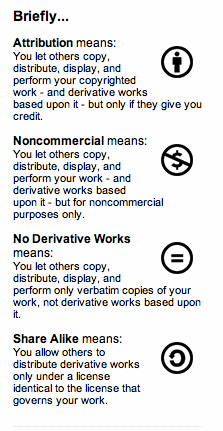Search Engines
The Dark Side Of The Cloud
I am often asked what cloud computing is. Most people know the buzzwords: working in the cloud, move to the cloud, life in the cloud, etc. Technically speaking, Wikipedia says cloud-computing means using multiple server computers via a digital network, as though they were one computer. Cloud computing, like regular computing, can be broken up…
Read MoreVanity Suffixes For Your Domain, Small Businesses Need Not Apply
This week in Singapore, the Internet Corporation for Assigned Names and Numbers (ICANN), which is the Internet body that oversees domain names, voted to open the control of domain suffixes a.k.a. gTLD (generic top-level domains) like .com, .net, .biz, etc. In the past they have allowed a total of only 22 suffixes. Going forward, companies…
Read MoreFree -and Legal- Images for Your Blog
For basic tips on using images online, please see our blog, Image Basics for Bloggers, from last week. What is Creative Commons? In the past, buying photography was expensive and complicated. Royalties needed to be paid and photos were limited to many restrictions on how they could be used. Then along came Creative Commons in…
Read MoreImage Basics for Bloggers
Attract their attention When it comes to blogging, we all know that it takes great content to attract attention. Part of this is the written content, but just as important part are the visuals you find to support your words. Yes, the secret is in the pictures. Adding just 2 images can increase the time…
Read MoreSEO Basics: Get the Most from Keywords
Why do you need Keywords? They lay the foundation for Search Engine Optimization (SEO). And SEO is how you get visitors to your site. It lets people know you exist. Keywords are used by search engines to find a product or service like yours and match it to the customer looking for that. Close your…
Read MoreSEO Explained through Analogies
SEO (Search Engine Optimization) can be daunting stuff. It’s the sort of topic that makes one’s eyes glass over and can put the worst insomniacs to sleep. BUT it is one of the four most important elements to Inbound Marketing and is often not understood. Many consider it the magic behind the curtain. It is…
Read MoreDispatches from Blogistan, A Book Review
Described in the subtitle as “a travel guide for the modern blogger,” Suzanne Stefanac’s book, Dispatches from Blogistan, is worth reading whether you are a blogger or not. This is not so much a how-to book as it is a why-to-blog book. The first two chapters offer a new take on the history of communications. And…
Read More


